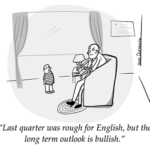How schools use time is an evergreen issue in education. No matter what time of year it is, time — or the lack of time — is always up for debate.
But, although time and learning have been at the forefront for a couple of decades, we haven’t exactly embraced significant improvements. We grumble about the agrarian calendar and how schools should no longer be aligned with the agrarian calendar — but then we allow academic calendars to be ruled by athletic calendars because, of course, that makes perfect sense in the 21st century! We fuss over whether any students should start school before dawn — of course, they should not! — and then persecute superintendents and school boards brave enough to tackle such a change. We sit on the sidelines when governors and state legislatures mandate that school cannot start until after Labor Day because of the inconvenience to the tourist industry. (The tourist industry? In Maryland? Really?)
We look in so many of the wrong places when we try to improve time for learning. We neglect one of the most crucial areas: how teachers use their time.
For too long, we’ve assumed that a teacher’s workday should more-or-less align with the student’s learning day. A teacher’s work has been defined as standing in front of students all day long and attending back-to-school night for a few hours early in the year. Teachers should arrive at school shortly before students and leave about 30 minutes after the last bus departs. We’ve assumed that teachers will be doing more of their lesson planning and grading at home.
Hasn’t anyone noticed that our expectations for how teachers work have changed — a lot — but that we’ve barely tweaked the teacher workday?
Time for teacher learning
Teachers deserve a workday and a work year that has instruction as its core but builds in time for planning, personal learning, and collaboration. A teacher should teach no more than 20 hours a week and spend the other 20 hours a week on her own learning and planning and in collaboration with colleagues. And all teachers should work a full year — closer to 240 to 250 days a year — not an abbreviated academic year of 180 to 190 days a year. And, of course, they should be compensated accordingly, with the additional hours baked into salaries and extra pay for extra duties eliminated. They should, in short, be treated like professionals.
As instruction has become more layered, teachers should have more workday time to plan lessons that incorporate standards and formative assessments, address the needs of many different children in a single classroom, and attend to social-emotional issues. Every week should include several hours of time with colleagues. A team of teachers could use this time to write lesson plans or common assessments. Or they might study data generated from those assessments and develop strategies for how to respond to the needs identified there. They could spend their time observing in each other’s classroom and offering feedback about instruction.
As teachers advance in their careers, they should have options for doing non-classroom work. Not only is that a smart way to take advantage of teacher knowledge, it’s also a strategy for keeping more teachers in the classroom. A teacher who is interested in coaching other teachers could have a workday that is split between teaching responsibilities, personal professional learning, and coaching other teachers. A teacher who wants to write curriculum likewise might divide her time between classroom teaching and curriculum work. Instead of asking teachers to do some of this work after they’ve already spent a day on their feet in a classroom, districts would find ways to blend instructional work with other types of teacher work.
Let’s stop niff-nawing about agrarian calendars and allowing athletic schedules and the tourist industry to dictate the scope of the year. Let’s get serious about designing a professional workday that benefits teachers and students — because ultimately that benefits all of us.
JOAN RICHARDSON (@KappanJoan) is editor-in-chief of Kappan magazine.
Originally published in December 2016/January 2017 Phi Delta Kappan 98 (4), 4. © 2016 Phi Delta Kappa International. All rights reserved.
ABOUT THE AUTHOR

Joan Richardson
JOAN RICHARDSON is the former director of the PDK Poll of the Public’s Attitudes Toward the Public Schools and the former editor-in-chief of Phi Delta Kappan magazine.










